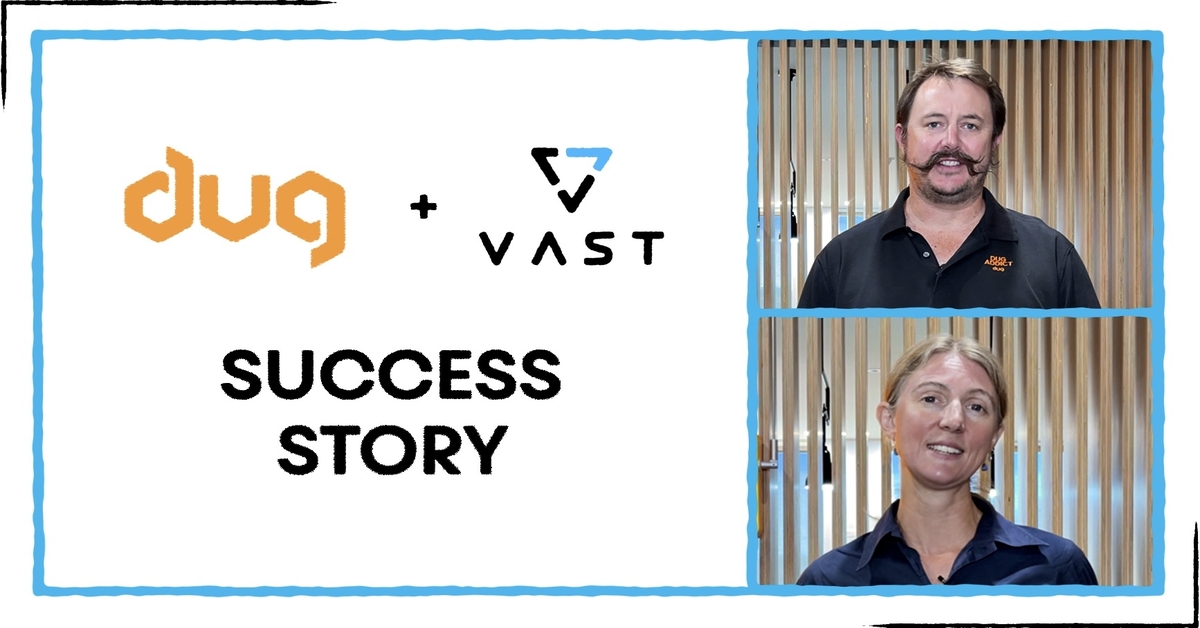VAST Data has recently released a cool video featuring our Chief Information Officer Dr Stuart Midgley and the International Centre for Radio Astronomy Research’s (ICRAR) Professor Cathryn Trott about their experience using VAST Universal Storage for their high-performance computing as a service (HPCaaS) workloads.
VAST’s promise of “no compromises” has certainly resulted in faster I/O, less interruptions to our cloud-based HPCaaS customers, and greater reliability and resilience. It certainly is a fantastic storage solution. Watch the video below!
The secret sauce.
But what is VAST’s secret sauce? What makes it different and special?
Apart from offering a full flash, enterprise-grade storage solution at near spinning-disk prices, the real smarts are buried deep within the storage.
VAST is built on a high-performance, high-duty cycle Intel Optane cache in front of a huge amount of Quad-level cell (QLC) Flash storage. Once data has stopped changing, it is migrated from the Optane to the QLC. It is this process where the really, really clever stuff happens.
Because VAST rewrites the data, the storage is able to make a multitude of decisions about how to stripe, place, dedup, compress, protect, and optimise—which isn’t normally possible with traditional block or object storage. It can apply policies to allow the storage administrator to adjust these steps, thereby optimising the storage on a case-by-case basis.
The clever use of NVMe-oF means that the rewrite process can occur safely in the background, without incurring a performance or integrity penalty to the thousands of clients beating away on the front-side servers.
By leveraging RoCE (RDMA over converged ethernet), they can deliver low-latency, high-bandwidth access to data without imposing a high CPU load on the client or server.
From a Linux perspective, having access to the storage via NFS reduces the administrative overhead. There is no need to build third-party kernel modules, which may or may-not be up-to-date with kernel versions and patch levels.
NFS is the most tested network file system in the Linux/Unix world. It works across all Linux distributions, across architectures, and even to MacOS and Windows.
Bundling all this together in an appliance means the storage is simple to administer and easy to live with.
VAST Universal Storage hasn’t just changed the way we store data, it is changing our relationship with data.
VAST allows new and novel ways to interact with data and gives us, and our customers, greater insights as a result.
Read a user case study published by Intel on our usage of Intel Optane storage and the new storage paradigm that VAST Data is bringing to market.
Be sure to check out our case study on the work we’ve done with Professor Trott at ICRAR too! Our HPCaaS experts processed six years worth of data backlog within three hours, achieving run-times 125x faster. This has helped put Australia at the forefront of radio-astronomy research—Professor Trott published a paper years ahead of schedule that has since had more than 80 citations.
Drop us a line at [email protected] if you’ve got questions. We’ll be more than happy to give you an introduction to our unique HPCaaS offerings and let you know how we can turbocharge your research with our #PowerfulThinking.




































